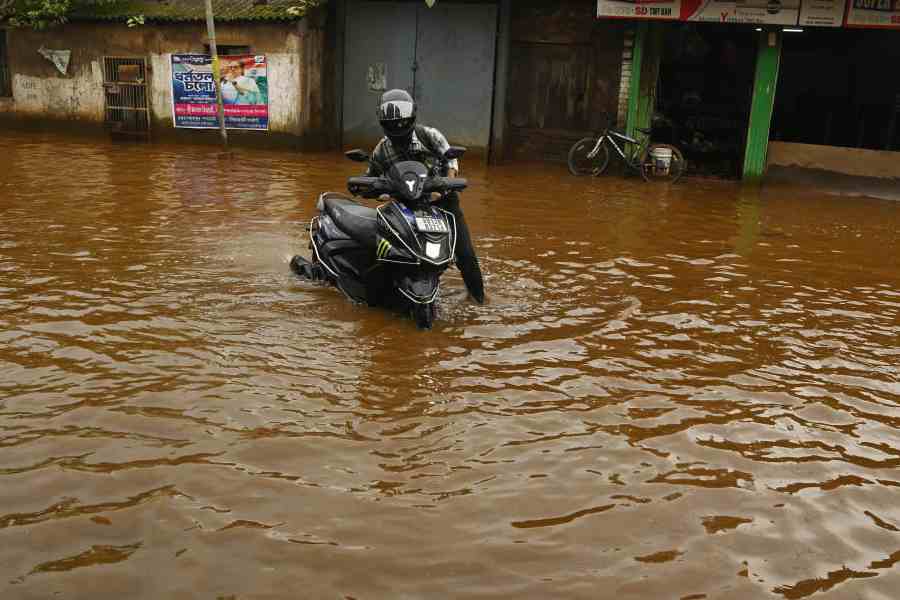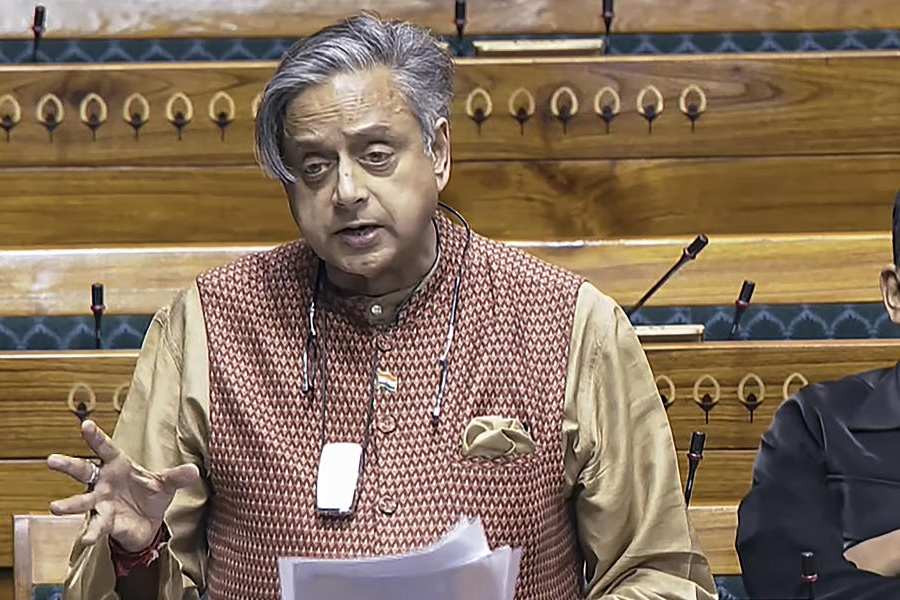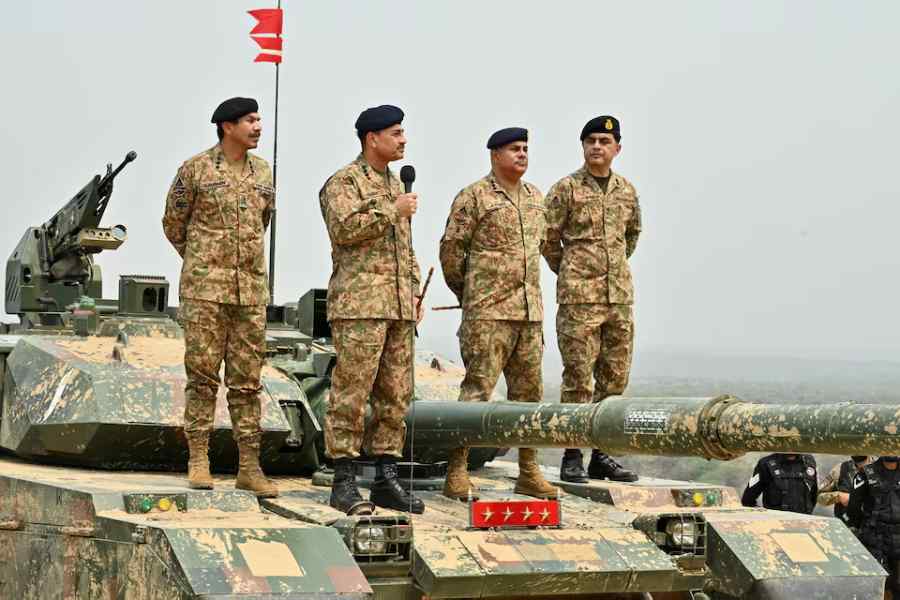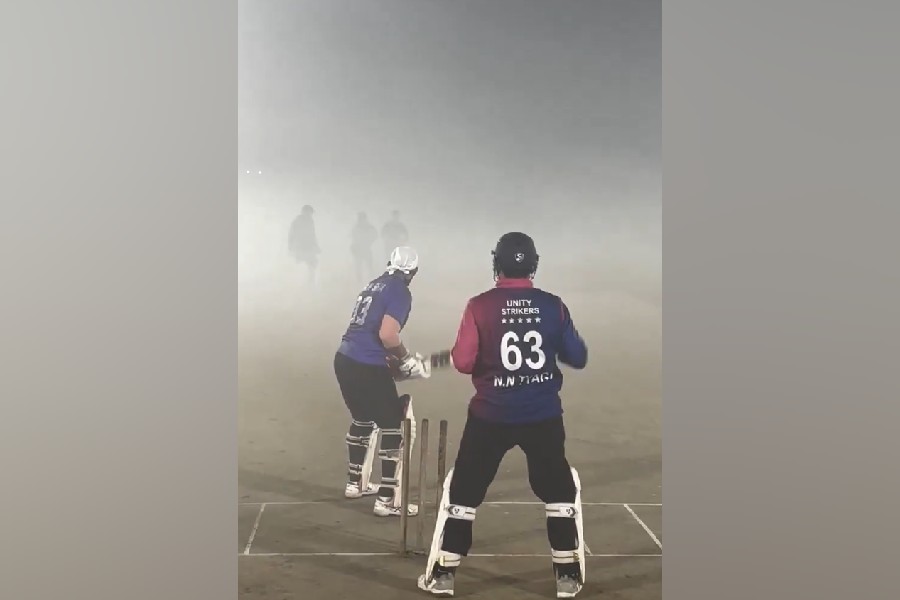Shops stand empty, schools sit vacant, and clean water sells at premium prices. A medical emergency has become a catastrophe multiplied many times over.
This is the reality of Howrah’s flood-ravaged neighbourhoods.
Metro reporters waded through knee-deep water in Howrah’s Salkia on Tuesday. Just 1.5km north in Bamangachi, the situation grows even more desperate.
The locality of Bose Company remains submerged under waist-deep water — so deep that visiting a shop becomes an ordeal and attending school impossible unless a child meets a certain height requirement. Drinking water commands premium prices while residents live in dread of needing to transport elderly family members to hospitals.
Wellington boots have become essential survival gear, as prolonged water exposure leaves feet swollen and pale.
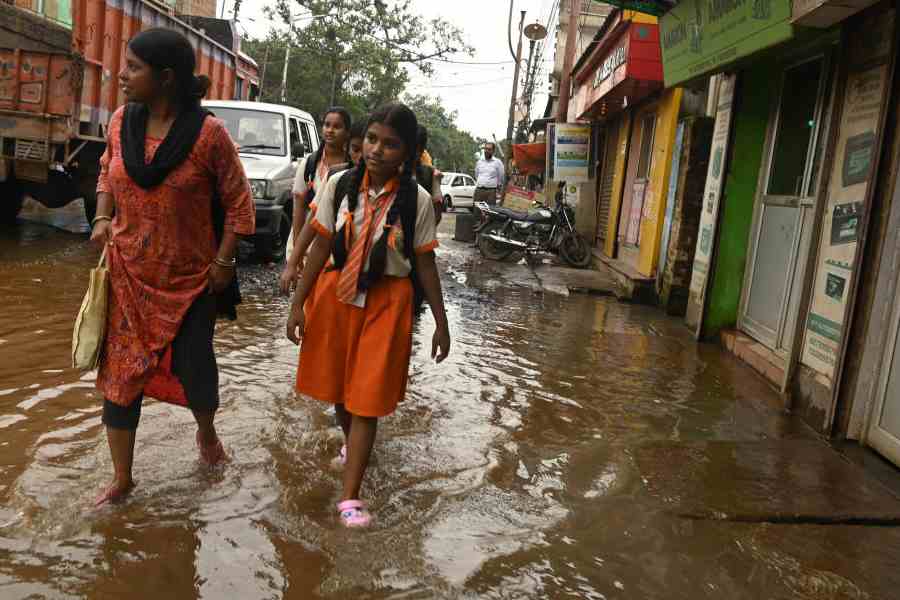
Waterlogged and poor condition of Bamungachi Benaras Road Howrah on Tuesday afternoon. (05.08.2025) | The Telegraph picture by - Bishwarup Dutta.
Business hit
“Nothing moves here — not the stagnant water, not the heavy vehicles struggling through flooded roads,” said Sandip Jaiswal, who owns a shop selling steel rods and cast iron products in Bose Company, Bamangachi. “Business has ground to a halt. You open your shop hoping water levels will drop, but they never do.”
His shop overlooks an extension of Benaras Road, which connects Bamangachi bridge to Q Road in Dasnagar. The street, typically lined with shops selling galvanised iron manhole covers, cast iron gratings, and pipes, now resembles a rust-colored river.
Iron foundries sit next to grocery stores and sweet shops, all submerged. The accumulated water has turned red as iron products rust after weeks underwater. With heavy goods vehicles banned due to dangerous road conditions, there’s no hope of clearing waterlogged inventory soon.
Daily dangers
“Not a day passes without someone falling into the water while trying to wade through,” said Kartick Singh, who runs a business in Bamangachi. “Vehicles lurch and wobble down waterlogged roads. Women only venture out when absolutely necessary.”
He recounted Wednesday’s incident: “We had to rush someone to a nearby hospital after he fell and injured himself in the water.”
The transportation crisis compounds every problem. Ambulances refuse to enter C Road, which has been flooded for weeks. Residents must rely on e-rickshaws or autorickshaws for medical emergencies — and even these drivers grow reluctant after dark, dreading the pothole-riddled routes they must navigate.
“At night, even auto drivers hesitate,” said Anil Ghosh, a resident of Railway Colony in Bamangachi, near Eastern Railway’s electric locomotive shed.
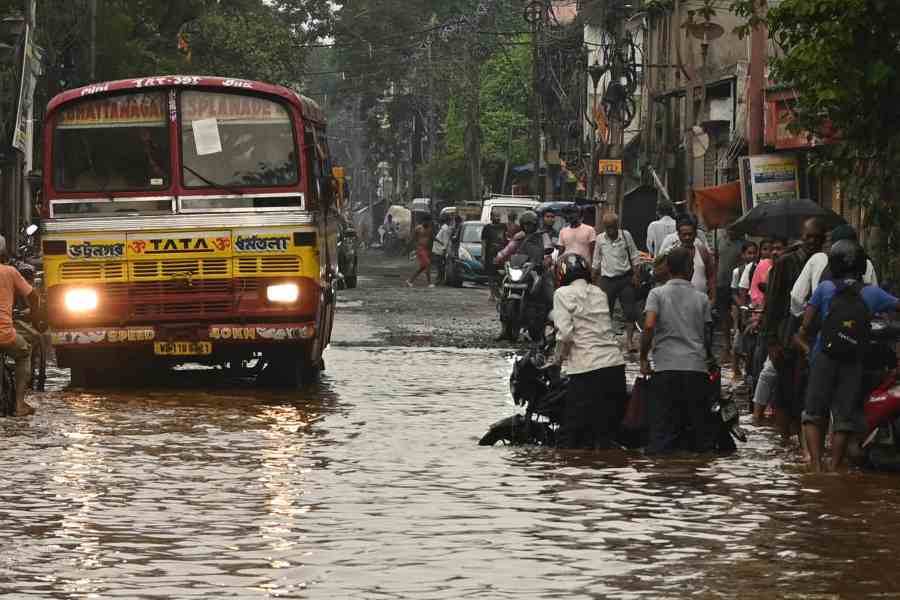
Waterlogged stretches of Benaras Road at Bamangachi on Tuesday afternoon. (05.08.2025) | The Telegraph picture by - Bishwarup Dutta.
Failing lifeline
Residents once relied on Rani Jheel, a sprawling water body near the locomotive shed, for relief during the monsoon season. But years of silt accumulation have drastically reduced the reservoir’s capacity. Recent partial dredging saw the extracted silt dumped on a nearby railway playground —creating new problems.
“The filth reeks after every shower, making life unbearable,” said Biplob Ghosh, a C Road resident who commutes to Sector V in Salt Lake for work. “There’s knee-deep water everywhere. Most of us leave home in shorts and carry work clothes. Even our domestic help gets two sets of sarees when she arrives after wading through the flood.”
He added with resignation: “Almost everyone owns gumboots now.”
Month-long misery
C Road represents just one of several Bamangachi pockets where water hasn’t receded in weeks. Residents report that Kar Para, Viveknagar, and Nonapara have remained flooded for nearly a month, with each new rainfall adding to existing water levels.
The educational system has collapsed under the crisis. “Our school serves close to 250 students across two shifts —morning and afternoon — up to Class Eight,” said Suresh Sharma, a teacher at Sri Azad Hindi Vidyalaya. “For weeks now, only 10-15 students attend each shift because families can’t safely reach the school.” He added with uncertainty: “We don’t know when water will recede and students can return.”
Promises vs reality
Officials from Howrah Municipal Corporation (HMC) acknowledge Bamangachi’s status as a traditionally low-lying area, noting that pumps have been installed to drain rainwater.
“Following the Belgachhia waste dumping site accident, we’ve implemented several measures to prevent waterlogging from blocked sewer lines around Bamangachi,” said an HMC board member. “Previously, water levels wouldn’t recede for weeks. That’s changed — the improvement will become visible once rainfall stops.”
The official added that Eastern Railway plans to revamp Rani Jheel to prevent future waterlogging, with results expected to show soon.
Yet for residents trapped in this watery nightmare, hope feels as distant as dry land. Most have resigned themselves to an annual cycle of flood-induced misery, accepting that water woes will return each monsoon season, year after year.

